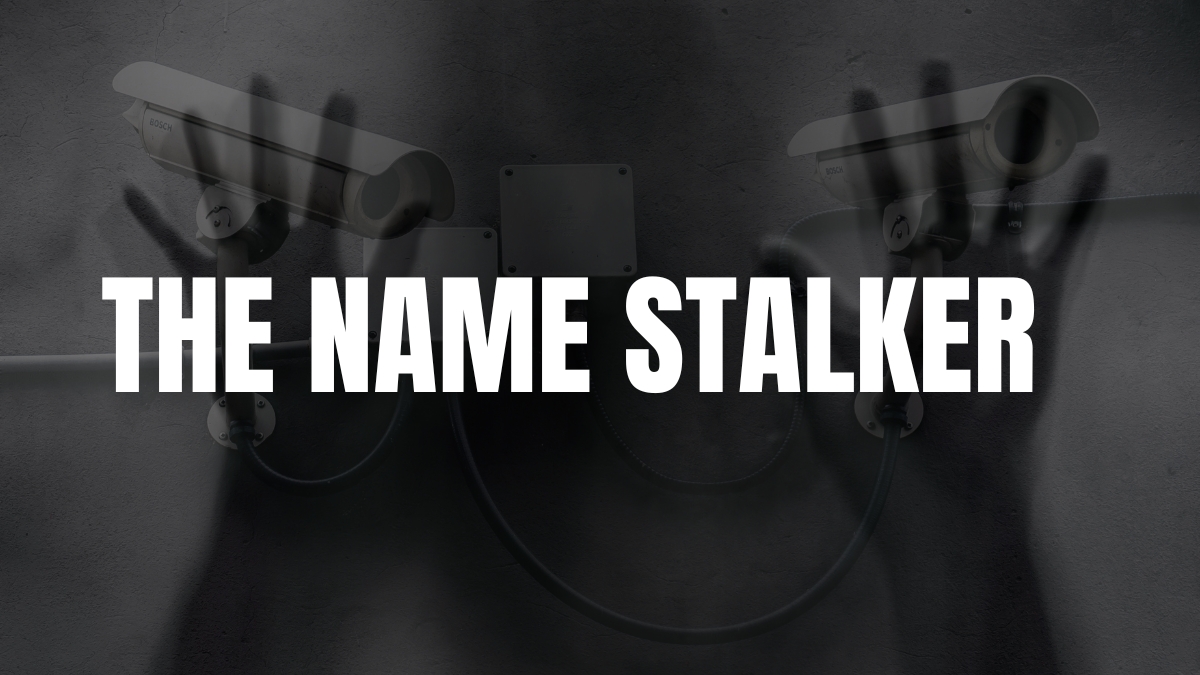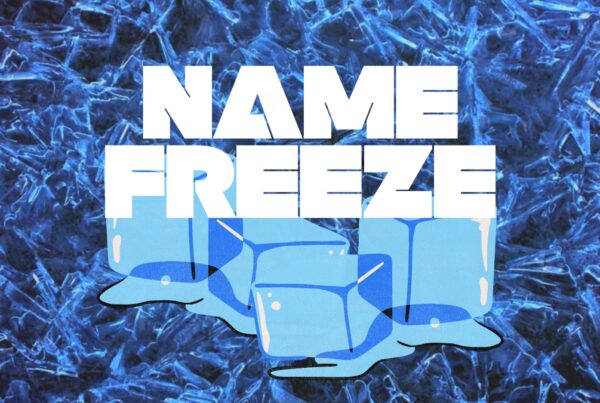How People Track Others Online Using Only a Name
Finding someone used to require weeks of perseverance, a phone book, and a private detective. These days, it can be completed in under five minutes. With only one name, a few clicks, and the internet starts to piece together a person’s entire story, including pictures, employment history, relationships, addresses, and even interests.
Greetings from the disturbing realm of name stalking, a digital phenomena in which an individual’s online persona turns into a web of breadcrumbs that leads directly to their offline life. Building a personal brand is now simple thanks to the internet, but staying hidden is now practically impossible.
The dark psychology of digital fixation, the industries that secretly rely on personal data, how people utilize names to trace identities online, and self-defense strategies will all be covered in this article.
The Internet’s Obsession With Names
Names are no longer just labels; they are digital keys. Each mention, tag, and username links to a huge information network. A entire internet profile, including those on Facebook, LinkedIn, Reddit, and databases that have been leaked, can be found by typing a name into a search bar.
Search engines are just the tip of the iceberg. Social media and specialized tools go deeper. Access to personal records is sold through websites such as Pipl, Spokeo, and even data brokers like Whitepages or BeenVerified. The fact that these technologies frequently don’t need to be verified in order to be used is frightening.
The majority of people have never thought about how much their mere online presence reveals. New data points are created when someone posts a selfie, downloads a fitness app, or registers for a webinar. Putting such pieces together under a single name can create a frighteningly complex image.
How People Get Tracked Online
The process itself is quite easy. A person begins with a single hint, such as their name, and expands from there using digital footprints and pattern recognition.
- Search Engines: A name combined with location or job title can pull up LinkedIn profiles, social media, and even articles.
- Image Searches: Uploading or reverse-searching a profile photo connects to other platforms.
- Social Media Graphs: Mutual followers and tagged photos link people across networks.
- Leaked Databases: Old sign-ups, hacked lists, and email breaches connect a person’s name to contact details.
- AI Facial Recognition: Advanced tools can now match a face across dozens of websites instantly.
An initial curiosity can swiftly develop into an obsession. People start charting a stranger’s life, including their place of employment, romantic partners, and posts. Journalists and missing-person investigators are among those who make effective use of this power. Others use it for manipulation, blackmail, or harassment.
The Psychology of the Name Stalker
Why would someone take the time and effort to look up someone else by name? The reasons vary.
It starts out as innocent curiosity for some people. They look up an internet stranger, a former partner, or a coworker on Google. Their curiosity grows as they discover more. The sense of control over someone else’s story makes the hunt addictive.
Others are motivated by darker goals, such as envy, obsession, or revenge. “Catfishing” in online dating has developed into complete surveillance. Nowadays, people do more than just confirm someone’s identity; they keep tabs on everything, including who they interact with, what they enjoy, and even where they are in real time via tagged posts.
Stalking has become more commonplace and easier in the internet era. Looking through someone’s old pictures is regarded as casual curiosity. However, it fosters an intimate feeling without consent on a psychological level. They don’t know who you are, yet you feel like you know them.
When Curiosity Becomes Dangerous
A straightforward search can turn dangerous. Name stalking victims describe feeling unsafe, anxious, and paranoid. Some have had anonymous harassers contacting their jobs, exposing their locations, or stealing their personal images.
When stalkers combine location information with names, the threat increases. A person’s movements, family members, and even home address can be tracked down using public property information and tagged posts.
In severe situations, this results in doxxing, which is the practice of posting someone’s private information online in an attempt to embarrass or threaten them. In a matter of hours, the impact can ruin jobs and reputations.
The fact that people have very little control over data once it’s online is the worst aspect. Cached versions and screenshots are not deleted even after a profile is deleted.
The Business of Tracking Names
Every case of name stalking is the result of a huge data market. Every second, businesses gather, examine, and sell personal data.
Your name appears in data profiles that are fed by every app you use, website you visit, and every transaction you make. Your digital identity is monetized by advertising networks, people search databases, and even background check services.
The harmless personalization that began has developed into a full-blown surveillance economy. A data model of your location, tastes, and behaviors, known as your “digital twin,” is continuously being updated and offered for sale to the highest bidder.
When leaked or scraped, this same data feeds identity theft and name stalking. Convenience marketing methods have evolved into manipulative instruments.
Case Studies: The Human Cost
Take Emma, a fitness instructor who gained popularity on TikTok. After recognizing her from a nearby gym, a spectator looked up her name on Facebook and discovered her personal profile. Her personal images were making the rounds on Reddit within weeks.
Or consider the tale of Michael, who owns a modest company. The name of his business was utilized to con people and make phony websites. He found that his name and address had been copied by dozens of data brokers when he attempted to delete the listings.
These stories are not rare. They reflect a larger truth: once your name is online, it is nearly impossible to take it back.
The Line Between Research and Stalking
The distinction between invasion and open information is clouded by the internet. Employers use the internet to screen candidates. Reporters look into stories. Investigators follow digital hints. These applications of internet data are acceptable.
However, the same instruments can be misused. Intent and consent are what set research apart from stalking. It’s one thing to look someone up for safety or confirmation. Another is compiling data about their life without their consent.
This ethical gray area will only deepen as artificial intelligence and predictive algorithms make tracking faster and more precise.
The Role of AI and Predictive Search
Name stalking has been enhanced by AI. Nowadays, search engines use trending questions to determine auto-complete, so if your name gains traction, the internet itself begins to recommend it.
Deep learning algorithms are able to recognize cross-platform relationships between usernames, faces, and writing styles. Using information and linguistic analysis, even anonymous accounts can be linked to actual people.
Essentially, AI predicts people rather than merely finding them. It knows what you might buy, who you might chat to, and where you might work next. The digital shadow expands more quickly than you can manage it.
The Cultural Obsession With Exposure
The term “stalking” has a cultural component as well. Exposure is rewarded on the internet. Oversharing, influencer culture, and viral popularity make being visible seem like success.
However, there is a hidden cost to this visibility. The more well-known a person gets, the simpler it is to follow their entire existence. Thousands of “digital voyeurs” follow some creators, not out of admiration but out of obsession.
This paradox defines modern life: we crave attention but fear exposure. We build online identities to be seen but struggle with how much of ourselves is public.
The Countermovement: Privacy as Luxury
In a world of overexposure, privacy is becoming a privilege. High-profile figures hire digital reputation firms to scrub results and replace them with positive content.
Ordinary folks use privacy apps like Incogni or DeleteMe to get rid of their information from broker websites. Even so, the process is never-ending. The same information keeps coming up in new copies.
As a result, digital minimalism has grown as a new industry. Individuals are spending money to vanish, or at the very least, lessen their online presence.
How to Protect Yourself
While complete privacy may be impossible, you can still take control.
- Audit Yourself: Search your own name regularly to see what’s public.
- Lock Profiles: Make social media accounts private and limit tagging.
- Opt-Out of Data Brokers: Use tools or forms to remove your data.
- Use Different Usernames: Avoid reusing the same handle across platforms.
- Avoid Oversharing: Be mindful of what you post, especially location-based content.
You cannot erase the internet, but you can make yourself harder to find.
The Name Economy and Reputation Management
All of this has an economic component as well. Nowadays, a person’s name can be used as money. Professionals, entrepreneurs, and influencers depend on name recognition to open doors.
Names that have been damaged or stolen also lose value. Because a person’s name may make or destroy their career, online reputation management has grown to be a billion-dollar industry.
This name economy explains why companies and individuals struggle so hard to dominate social verification, Wikipedia entries, and Google search results. It is about surviving in a world where trust is digital, not about ego.
When AI Becomes the Stalker
The ability of AI-driven gadgets to behave like stalkers is among the more unsettling advances. Some apps harvest names from social media and compare them to behavioral information.
The algorithm now finds people for you; you don’t even need to look for them. Relationships, routines, and future occurrences can all be predicted by these technologies before they occur.
The line separating “technology watching you” from “technology helping you find” is rapidly blurring.
Beyond Fear: The Future of Digital Identity
There is a chance for change despite the risks. With laws like the California Consumer Privacy Act and the General Data Protection Regulation, governments are beginning to control data privacy. There is pressure on IT corporations to anonymize personal data and restrict tracking.
Digital identity sovereignty where individuals own and control their information could be a feature of the internet’s future phase. Rather than granting platforms access to your data, you will grant them temporary access, similar to lending a key.
The people behind the names may finally regain some control if this vision comes to pass.
Conclusion
In actuality, the tale of “The Name Stalker” is the tale of our day. Identity is both a source of strength and vulnerability in this day and age. One name has the power to inspire passion or open doors.
Our modern biography is created with each search, tag, and click. The difficulty lies in figuring out how to be present online without being discovered.
The most distinctive thing about you is your name. Preserve it, honor it, and keep in mind that privacy is more than just hiding in a world where anyone can find anyone. It comes down to deciding what to disclose.
Next, we turn to Name Swap Economy, where names are treated like tradable assets, and the choices people make in exchanging them reveal both opportunity and risk in the digital age.




